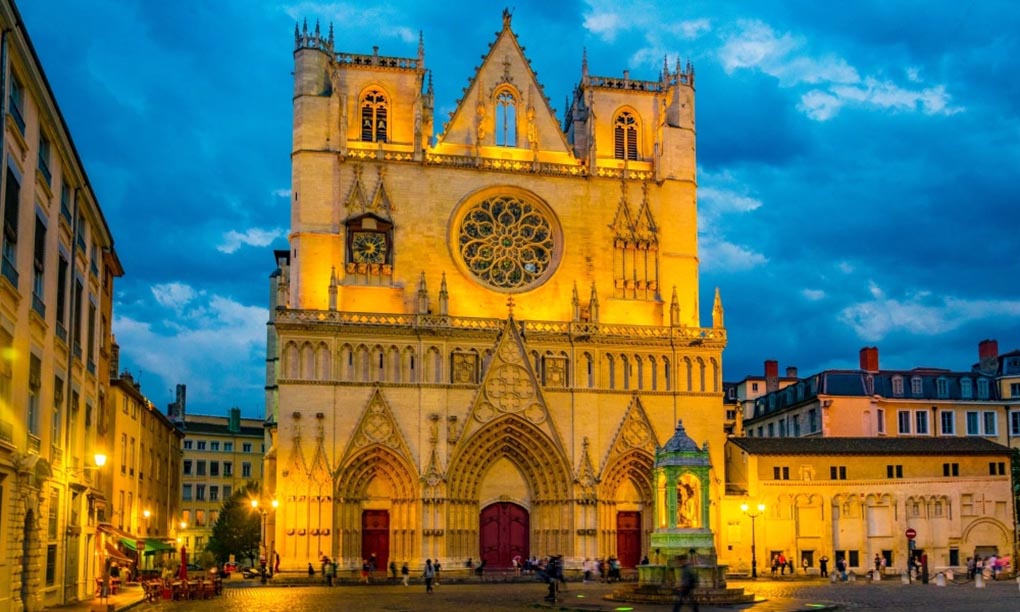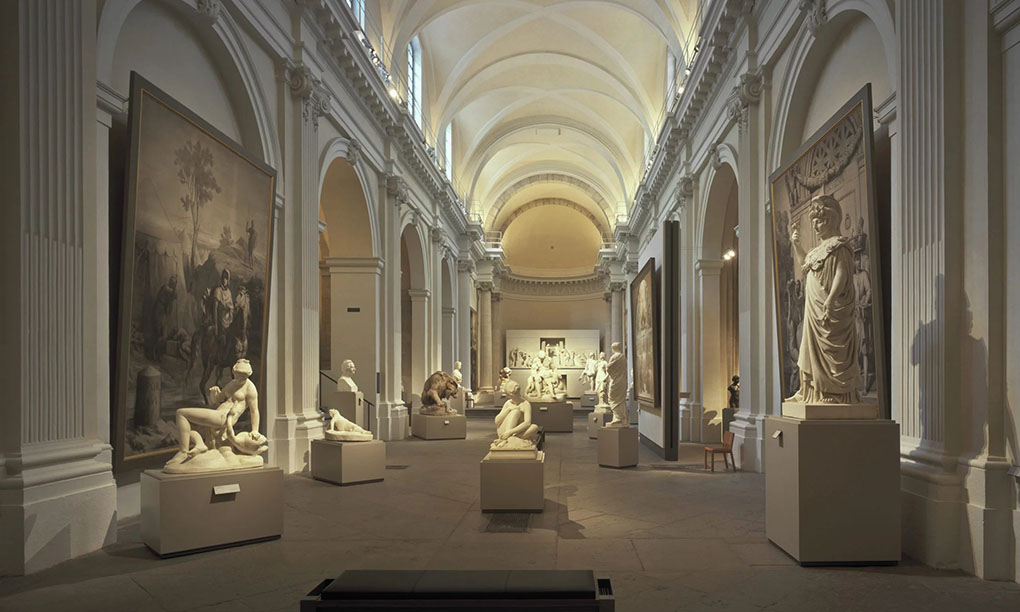Lyon, a historical and cultural gem of France, is not only known for its beautiful landscapes and rich cuisine but also attracts countless visitors with its deep cultural heritage and diverse historical legacy. With its vibrant arts scene, ancient architecture, and rich traditions, Lyon offers a unique blend of old and new that captures the imagination of travelers from around the world. As one of France’s cultural and artistic centers, Lyon boasts many awe-inspiring cultural landmarks, each telling a unique story and carrying the history and traditions of this city. Today, we will explore the four major cultural landmarks in Lyon and experience the city’s unique charm.
1. The Museum of Fine Arts of Lyon: The Starting Point of an Artistic Journey
The Museum of Fine Arts of Lyon (Musée des Beaux-Arts de Lyon) is one of the most important art museums in France and one of the most iconic cultural landmarks in Lyon. Located next to Place des Terreaux in the city center, the museum was originally a convent and later transformed into an art museum. This museum is not only a paradise for art enthusiasts but also an important window for exploring Lyon’s and France’s historical and cultural heritage.
- Richness of the Collections
The museum’s collection spans from ancient to modern art, including paintings, sculptures, and decorative arts. It houses works from world-renowned artists such as Leonardo da Vinci from the Italian Renaissance, Rembrandt from the Dutch Golden Age, and Monet from the French Impressionist movement. Each painting and sculpture reveals the creative style and artistic ideas of artists from different historical periods. Particularly noteworthy is the museum’s ancient art gallery, which displays many treasures from ancient Greece and Rome, offering visitors a time-traveling artistic journey. - Architectural History and Charm
As a historic art museum, the architecture of the Museum of Fine Arts is a work of art in itself. The museum’s exterior is elegant, and its spacious, bright interior perfectly blends ancient architectural styles with modern exhibition design. Particularly in the second-floor ancient art gallery, visitors can see typical French classical architectural elements such as arches, columns, and carvings, all of which contribute to a strong historical atmosphere. - Special Exhibitions and Events
In addition to permanent exhibitions, the Museum of Fine Arts regularly hosts various temporary exhibitions and cultural events, attracting visitors from around the world. Every year, the museum showcases world-class art pieces, including paintings, photography, sculpture, and installation art. If you are an art lover, be sure to check the exhibition schedule before visiting Lyon—you may be able to appreciate some unique artistic treasures.
2. The Lumière Museum: The Charm of the City of Cinema
Lyon is known as the “birthplace of cinema,” being the hometown of the Lumière brothers, who laid the foundation for modern cinema. To commemorate these two cinematic pioneers, the Lumière Museum (Musée Lumière) was established in Lyon, not only showcasing the origins of cinema but also introducing visitors to the evolution and history of film technology.

- The Lumière Brothers and the Birth of Cinema
The Lumière brothers invented film projection technology, which opened a new era for cinema. The Lumière Museum focuses on the inventions of the Lumière brothers, with rich exhibits that include valuable historical films, early film equipment, and related documents. You can see the Lumière brothers’ first film, “Arrival of a Train at La Ciotat,” as well as other early films they produced. All of this allows visitors to experience the birth and development of cinema as an art form. - Exhibition of Film Equipment
The Lumière Museum not only displays the history of cinema but also shows the evolution of film technology. From the earliest film cameras to later film projection equipment, and finally modern digital cinema, the museum showcases the revolution in film technology. The exhibitions are especially appealing to film enthusiasts, particularly those interested in the history of filmmaking. Visitors can learn about the early process of film production and even experience traditional film projection techniques. - Interactive Experiences and Events
In addition to traditional static exhibitions, the museum offers many interactive experiences, such as virtual filmmaking, film scene reenactments, and more. These activities allow visitors to engage with the joy of film production and gain a deeper understanding of the artistry and technology of cinema. Furthermore, the museum regularly holds film screenings and lectures, offering visitors the chance to enjoy classic films while learning more about the history and artistic value of cinema.
3. Saint-Jean Cathedral: The Intersection of History and Religion
The Saint-Jean Cathedral (Cathédrale Saint-Jean-Baptiste de Lyon) is one of Lyon’s most famous religious buildings, located in the heart of Old Lyon. As a Gothic cathedral, Saint-Jean is not only a sacred site for religious pilgrims but also attracts numerous visitors due to its unique architectural style and historical significance.
- A Model of Gothic Architecture
The architectural style of Saint-Jean Cathedral exemplifies classic Gothic features. The towering spires, intricate stained glass windows, and elaborate carvings are awe-inspiring. The cathedral’s façade, in particular, is adorned with sculptures of religious figures and biblical stories, showcasing exquisite detail. Inside, the vast space exudes a solemn and reverent atmosphere, making it an ideal place for both sightseeing and religious ceremonies. - The Astronomical Clock and Mechanical Show
One of the most famous features of Saint-Jean Cathedral is its astronomical clock. Built in the 14th century, this clock is renowned for its scientific value and intricate mechanical structure. Every hour, the clock performs a small mechanical display, showing dynamic figures and astronomical phenomena, captivating many visitors. This mechanical show reflects the fusion of ancient technology and art, making it an essential highlight of a visit to the cathedral. - The Cathedral’s Historical and Cultural Significance
Saint-Jean Cathedral is not just a religious structure; it also holds great historical and cultural significance. The cathedral has witnessed many historical events in Lyon, often serving as the site for important religious ceremonies. Visitors here can experience the deep religious atmosphere and learn about significant moments in French history, especially those related to the Catholic Church.

4. The Museum of Contemporary Art: A Treasure Trove of Modern Art
The Museum of Contemporary Art of Lyon (Musée d’Art Contemporain de Lyon) is one of France’s most important contemporary art museums, located near the beautiful Parc de la Tête d’Or in the city. This museum focuses on showcasing contemporary art from the late 20th century to the present, making it a must-visit cultural landmark for art lovers.
- Diverse Exhibition Content
The Museum of Contemporary Art is renowned for its diverse exhibitions, displaying works across painting, sculpture, video art, installation art, and more. Whether you’re interested in modern painting, digital art, or interactive installations, this museum can fulfill your artistic needs. The artworks often challenge traditional concepts of art, presenting the innovation and experimental spirit of emerging artists. - Works by Famous Artists
The museum houses works by many world-renowned contemporary artists, including Andy Warhol, Jeff Koons, and Yayoi Kusama. Through these pieces, visitors can learn about the development trends and stylistic changes in contemporary art, while also understanding the social, political, and cultural messages conveyed by the artists. - Rich Interactive Experiences
In addition to traditional exhibitions, the Museum of Contemporary Art encourages visitors to engage in interactive art experiences. The museum regularly hosts art workshops and interactive exhibitions, inviting the public to engage more deeply with the artwork. Such activities not only bring visitors closer to art but also provide them with opportunities to express and create their artistic viewpoints.
The four major cultural landmarks of Lyon—the Museum of Fine Arts, the Lumière Museum, Saint-Jean Cathedral, and the Museum of Contemporary Art—are all representative of the city’s cultural charm. Whether you’re interested in history, art, or religion, Lyon offers a rich cultural experience. From ancient artistic heritage to modern creativity, the cultural sites of Lyon encompass various forms of art, providing every visitor with a deep and inspiring experience. Through these cultural landmarks, we not only learn about Lyon’s historical background but also experience the city’s unique charm in the field of art and culture. We hope that during your visit to Lyon, you will deeply feel the artistic atmosphere and human spirit embedded in this city.
Tags: Artistic Journey, History and Religion, Lumière Museum